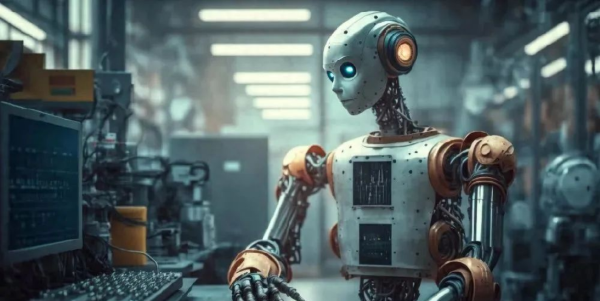
NVIDIA unveiled its robot "new brain" technology on August 25, 2025, aiming to implant robots with the "thinking ability" to understand the physical world and make autonomous decisions. This groundbreaking progress stems from the concept of "Physical AI" that Jensen Huang has emphasized repeatedly, marking a significant leap for artificial intelligence from perception and generation to physical interaction. With technological breakthroughs in the field of Physical AI by giants like NVIDIA and the accelerated advancement of the commercialization process of humanoid robots worldwide, the industry chain is facing unprecedented changes. As the "blood vessels and neural networks" of humanoid robots, the cable supply chain will be the first to feel the dual impact of technological iteration and large-scale production. According to industry estimates, for every 1 trillion yuan of output value created by the humanoid robot industry, it will directly drive a market of over 80 billion yuan in the cable supply chain. Domestic manufacturers such as Luxshare Precision, AVIC Optoelectronics, Zhongtian Technology, and Hengtong Optoelectronics have already launched the construction of production lines for special robot cables. A Chinese supplier of Tesla privately revealed that it is developing hybrid wire harnesses capable of withstanding 10Gbps speed and 10 million towing chain cycles – this supply chain transformation with dual requirements of high-frequency signals and industrial performance has quietly begun.
Humanoid robots have much higher requirements for cables than traditional industrial robots:
High-frequency and high-speed transmission requirements: Need to support real-time massive data interaction (such as terabytes of visual and sensor data per second), promoting the application of ultra-high-speed, low-latency communication cables (such as PCIe 5.0/6.0, 800G optical cables);
Flexibility and durability: Cables at joint parts need to withstand more than one million bending cycles (for example, the bending life of bionic joint cables needs to reach 10 million times);
Lightweight and miniaturization: The wire diameter needs to be reduced to less than 0.1mm while maintaining anti-electromagnetic interference capabilities. New materials such as copper alloy substitutes and photonic crystal fibers may become mainstream;
Energy transmission efficiency: High-power density cables need to support instantaneous kilovolt-level voltages (such as in motor drive scenarios), and the application of carbon nanotube wires may be implemented ahead of schedule.
According to industry forecasts, humanoid robots are expected to become the next popular intelligent mobile terminals after automobiles and mobile phones. Although it will take a long time for humanoid robots to be fully integrated into life, based on the current development trend, humanoid robots will gradually penetrate into daily life and work scenarios. With technological breakthroughs and the expansion of application scale, the humanoid robot market is expected to witness explosive growth. At present, China's humanoid robot industry is rapidly advancing from "R&D verification - small-batch trial production" to "leading enterprises achieving small-batch production of hundreds and thousands of units in 2025; the industry's mass production first year in 2026; and the commercialization first year in 2030". In the next 3 to 5 years, humanoid robots will be deployed in stages in industrial (especially new energy vehicle production lines), warehousing/special inspection, elderly care, and commercial service fields. The industry will follow a development path of scenario priority, scenario-driven data accumulation, and model iteration. In the short to medium term, the humanoid robot market can form a multi-billion yuan opportunity in specific industrial scenarios, and the full-scenario market has a trillion-yuan imagination space in the future. In the long run, humanoid robots are the only track that can approach the scale of electric vehicles. In 2026 (mass production first year) and 2030 (commercialization first year), the cable supply chain needs to cope with the following challenges:
Capacity ramp-up pressure: If the global production of humanoid robots reaches the million-unit level by 2030, the demand for power and signal cables alone will exceed 10 million kilometers per year, equivalent to 5 times the current global industrial robot cable market;
Cost control limit: The cost of cables per unit needs to be reduced from the current ten-thousand-yuan level in the customization stage to the thousand-yuan level, promoting the design of standardized modules (such as plug-in integrated wire harnesses);
Domestic substitution window: High-precision sensor cables and flexible printed circuits (FPC) currently rely on imports (Japan, South Korea, and Germany account for more than 70%). Domestic manufacturers need to achieve breakthroughs in materials and processes by 2025.
Industrial scenarios (2025-2027):
New energy vehicle production lines: The demand for oil-resistant and high-temperature-resistant cables (silicone rubber substrates) will surge;
Warehousing and logistics: Towing chain cables (with wear resistance index needing to be increased by 3 times) will take the lead in volume growth.
Civilian scenarios (2028-2030):
Elderly care services: Biocompatible cables (without allergenic materials) will become a rigid demand;
Household work: Self-healing cables (microcapsule technology) may achieve technological breakthroughs.
Technological collaboration: Joint research and development with robot enterprises (such as the cable-sensor integrated packaging technology adopted by Tesla Optimus supply chain);
Process innovation: Promote laser sintering printing cables (reducing connection points by 90%) and liquid metal injection molding processes;
Standard formulation: Actively participate in the formulation of standards for anti-interference and safety of humanoid robot cables by institutions such as IEEE and IEC.



View More(Total0)Comment Lists